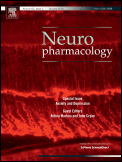
“Anecdotal accounts of the use of topical extracts from the cannabis plant being used on open wounds date back to antiquity. In modern times, cannabinoid therapies have demonstrated efficacy as analgesic agents in both pharmaceutical and botanical formats. Medical cannabis (MC), also known as medical marijuana,…
The endogenous cannabinoid system, consisting of cannabinoid receptors and their endogenous ligands, is ubiquitous throughout the human body. Available research shows that cancer cells express higher levels of the cannabinoid receptors, CB1 and CB2, relative to their noncancer counterparts, while also demonstrating an overall state of upregulation. Human in vitro studies, using nonmelanoma skin lines, have demonstrated direct induction of tumor cell apoptosis and inhibition of tumor-related angiogenesis, both by way of activation of cannabinoid receptors.
The analgesic outcomes observed in this case are supported by the results of a recent systematic review and meta-analysis of cannabinoids for medical use. Unlike intact skin, which is polar and hydrophilic, wounds lack epithelial coverage and are nonpolar and lipophilic. Therefore, lipophilic compounds such as the THC and CBD cannabinoids may be readily absorbed through cutaneous wounds.
Before the use of topical MC oil, the patient’s wound was growing rapidly. Yet, after a few weeks, a modest regression of his malignant wound was observed while the patient used topical MC. This secondary outcome suggests that topical MC may promote antineoplastic activity as per the findings of Casanova et al.
In summary, this is the first case report to demonstrate the potential for MC to provide effective pain and symptom management in the setting of malignant wounds. The rapid onset of analgesia after topical placement suggests that the effects were mediated through absorption of the THC and CBD cannabinoids that subsequently interacted with peripheral nociceptors, immune cells, and cancer cells. The postapplication analgesia may be because of the gastrointestinal absorption of ingested residual MC oil. This case suggests that MC delivered in vaporized and topical oil formats warrants further investigation in human malignancy, including randomized controlled trials capable of establishing long-term efficacy, optimal dosage, schedules of administration, mixture composition, and safety.”
http://www.jpsmjournal.com/article/S0885-3924(16)30328-1/fulltext
“Can Cannabis Oil Help Heal Wounds?” http://www.livescience.com/57500-can-medical-cannabis-help-heal-wounds.html
“Oral cancer patient, 44, claims cannabis oil helped to shrink a hole in his cheek that was caused by the disease” http://www.dailymail.co.uk/health/article-4124752/Oral-cancer-patient-44-claims-cannabis-oil-helped-shrink-hole-cheek-caused-disease.html
“Cannabis Oil Shows Potential To Heal Cancer Wounds Fast” http://www.healthaim.com/cannabis-oil-shows-potential-heal-cancer-wounds-fast/71395








